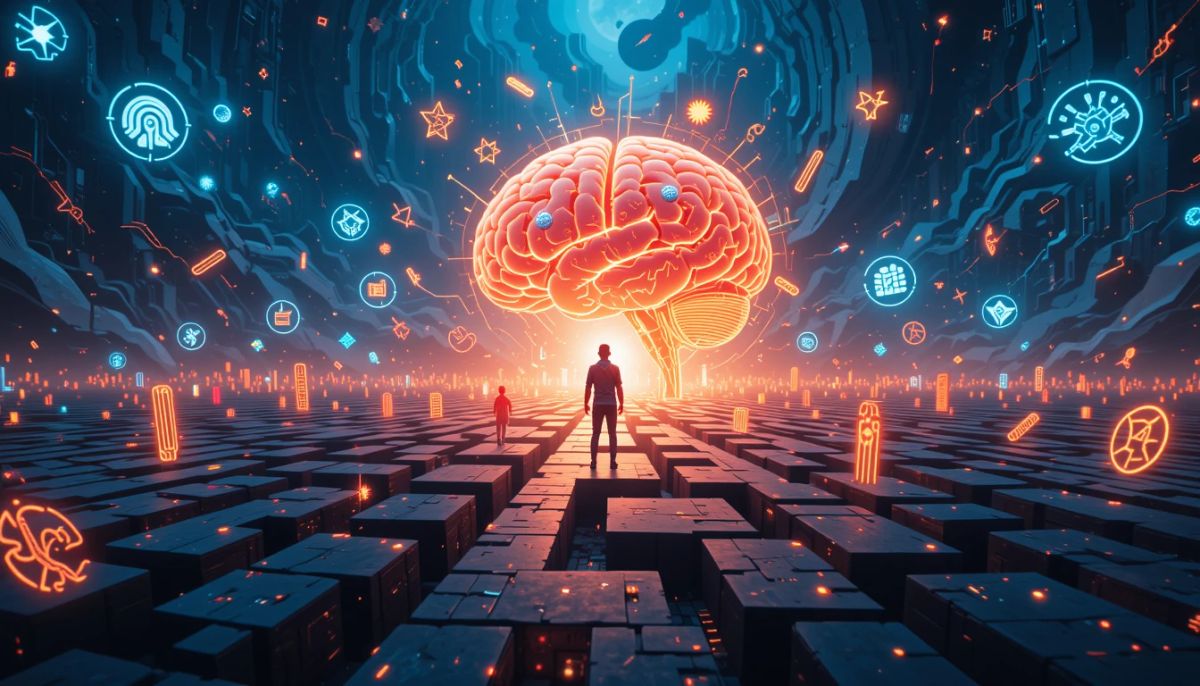In the rapidly advancing world of artificial intelligence (AI), large language models (LLMs) have captured widespread attention for their ability to process and generate human-like text. However, new research reveals critical limitations in their ability to explore and adapt effectively—a key component for problem-solving and innovation. This blog delves into the findings of a groundbreaking study investigating how LLMs perform in open-ended tasks compared to humans, uncovering valuable insights into the strategies these models employ and the challenges they face.
The Importance of Exploration in AI
Exploration is an essential cognitive process involving behaviors aimed at discovering new information and possibilities. It stands in contrast to exploitation, where known strategies are leveraged to achieve immediate rewards. In both natural and artificial systems, effective exploration enhances long-term adaptability and problem-solving capabilities.
The study highlighted here focused on two primary exploration strategies:
- Uncertainty-driven exploration: Sampling actions with uncertain outcomes to reduce ambiguity and increase decision-making confidence.
- Empowerment-driven exploration: Intrinsic motivation to maximize future possibilities by selecting options with the potential for numerous successful outcomes.
Both strategies are critical for solving complex problems, from scientific research to everyday decision-making.
The Study: Testing Exploration Strategies
To examine the exploratory capabilities of LLMs, researchers used the video game Little Alchemy 2, where participants (both human and AI) combined basic elements to create new ones. The game served as an ideal framework for evaluating open-ended exploration, requiring creative thinking and strategic decision-making.
Experimental Setup
The study involved:
- Participants: Data from 29,493 human players and trials conducted with four LLMs: GPT-4o, o1, Meta-LLaMA-3.1-8B, and Meta-LLaMA-3.1-70B.
- Task: Players aimed to discover as many new elements as possible by combining known elements. Out of 259,560 possible combinations, only 3,452 produced successful outcomes.
- Variables: Exploration strategies were analyzed through regression models, measuring uncertainty and empowerment values for each decision.
Key Findings
1. Human Advantage in Exploration
Humans discovered an average of 42 elements within 500 trials, leveraging both uncertainty and empowerment-driven strategies. This balanced approach allowed for more effective exploration and discovery of novel elements.
2. LLM Performance Comparison
Most LLMs underperformed compared to human participants, with one exception:
- GPT-4o: Discovered 35 elements.
- LLaMA-3.1-8B: Discovered only 9 elements.
- LLaMA-3.1-70B: Identified 25 elements.
- o1 Model: Outperformed humans, discovering 177 elements.
3. Strategy Analysis
While humans balanced uncertainty and empowerment, most LLMs relied almost exclusively on uncertainty-driven strategies. The o1 model was the sole exception, effectively integrating both strategies to achieve superior results.
4. Cognitive Representation Differences
Sparse Autoencoder (SAE) analysis revealed that LLMs process uncertainty values early in their computation, while empowerment values emerge later. This temporal mismatch leads to premature decision-making, hindering effective exploration.
Challenges and Implications
1. Fast Thinking Hinders Exploration
Traditional LLMs tend to "think too fast," prioritizing immediate decisions over long-term exploration. This behavior reduces their ability to discover novel solutions in complex environments.
2. Limited Use of Empowerment
Despite representing empowerment values in their latent states, most LLMs failed to utilize these values for decision-making. This underutilization limited their ability to maximize future possibilities.
3. Temperature Settings and Performance
Increasing sampling temperatures moderately improved performance by reducing redundant behaviors. However, random combinations alone were insufficient for effective task completion.
Potential Solutions for Improvement
The study suggests several approaches to enhance LLM exploratory capabilities:
- Reasoning Frameworks: Incorporating extended reasoning techniques, such as chain-of-thought prompting, may help models better balance uncertainty and empowerment.
- Model Architecture Optimization: Refining transformer block interactions could address the temporal mismatch in processing cognitive variables.
- Explicit Training Objectives: Training LLMs with specific exploratory goals may encourage more human-like problem-solving behavior.
Future Directions
Further research is needed to fully understand the mechanisms behind LLM exploration limitations. Key areas for investigation include:
- How model architecture influences information processing dynamics.
- Strategies for integrating uncertainty and empowerment in decision-making.
- The role of reasoning models, such as DeepSeek-R1, in improving LLM performance.
Conclusion
This study underscores the importance of exploration as a fundamental component of intelligence. While LLMs have made remarkable strides in language processing and reasoning, their limited exploratory capabilities highlight a critical gap in AI development. By addressing these limitations, we can pave the way for more adaptive and intelligent systems capable of solving complex, real-world problems.
The findings offer valuable insights for researchers, developers, and organizations aiming to harness the full potential of AI. As we continue to explore the frontiers of artificial intelligence, balancing fast thinking with deep exploration will be key to unlocking a new era of innovation.
